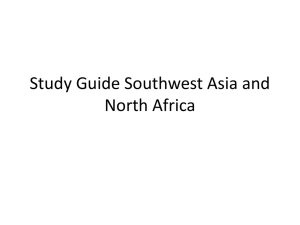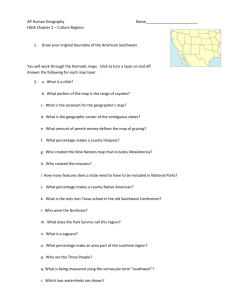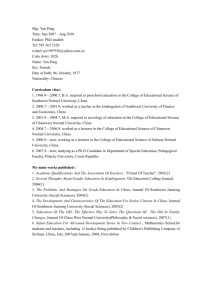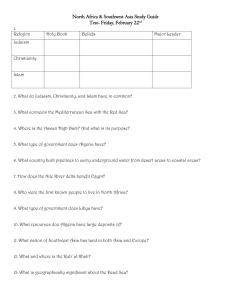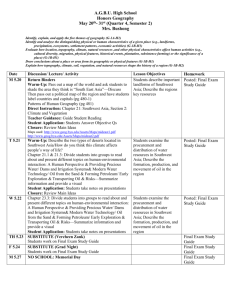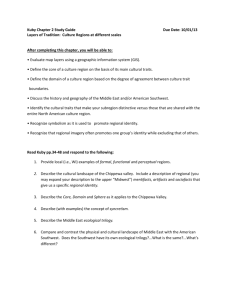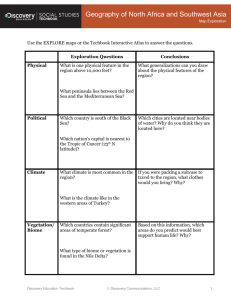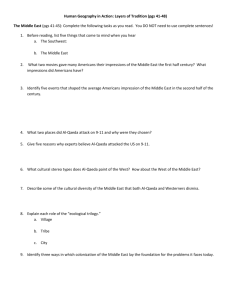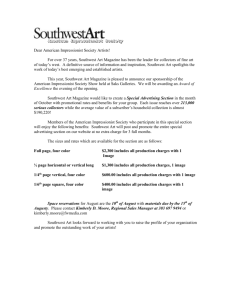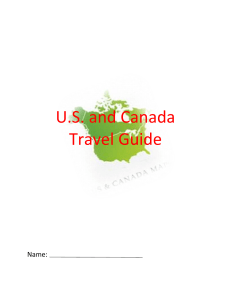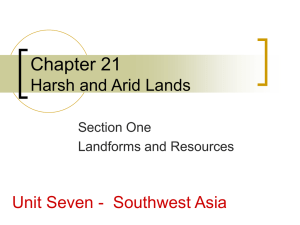Introducing the Region: Physical Geography of the Middle East
advertisement
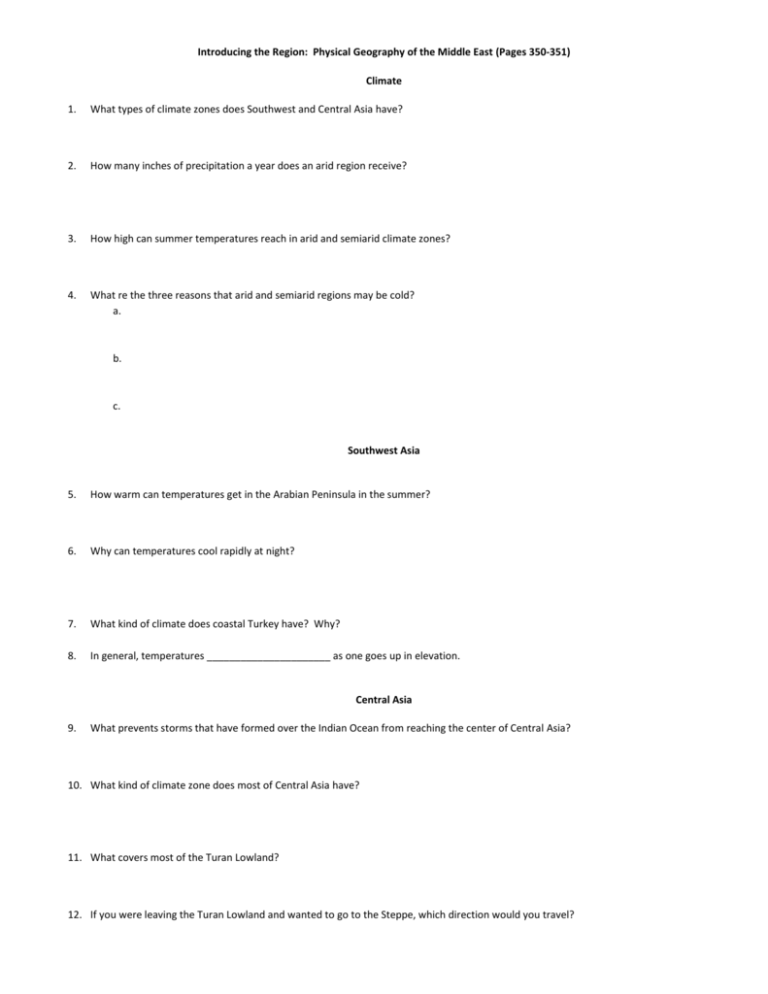
Introducing the Region: Physical Geography of the Middle East (Pages 350-351) Climate 1. What types of climate zones does Southwest and Central Asia have? 2. How many inches of precipitation a year does an arid region receive? 3. How high can summer temperatures reach in arid and semiarid climate zones? 4. What re the three reasons that arid and semiarid regions may be cold? a. b. c. Southwest Asia 5. How warm can temperatures get in the Arabian Peninsula in the summer? 6. Why can temperatures cool rapidly at night? 7. What kind of climate does coastal Turkey have? Why? 8. In general, temperatures ______________________ as one goes up in elevation. Central Asia 9. What prevents storms that have formed over the Indian Ocean from reaching the center of Central Asia? 10. What kind of climate zone does most of Central Asia have? 11. What covers most of the Turan Lowland? 12. If you were leaving the Turan Lowland and wanted to go to the Steppe, which direction would you travel? 13. How much precipitation does the steppe receive each year? 14. What is the peak of the Hindu Kush covered with year round? Vegetation 15. What limits the growth of vegetation in Southwest and Central Asia? 16. What covers much of the region? 17. What is desert scrub? 18. How deep can the roots of the acacia tree grow? 19. Where do some plants store their moisture? Southwest Asia 20. The types of plants that grow in Southwest Asia is based mostly on what two conditions? 21. “Patches of ________________________ appear on the central Anatolia Plateau.” 22. The hills and river valleys of Southwest Asia are covered mostly with what? 23. What two types of trees grow in the hills and river valleys of Southwest Asia? 24. What types of trees grow at higher elevations? 25. What kind of vegetation does the Mediterranean coastline support?
